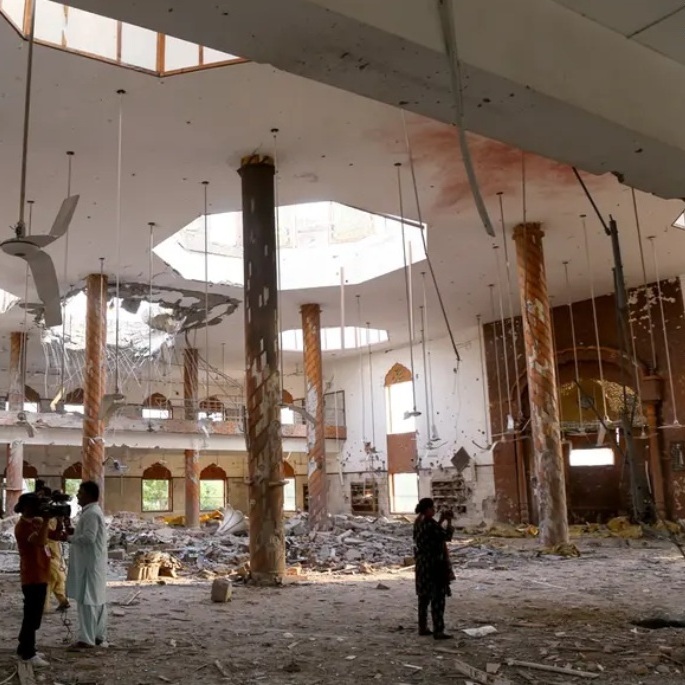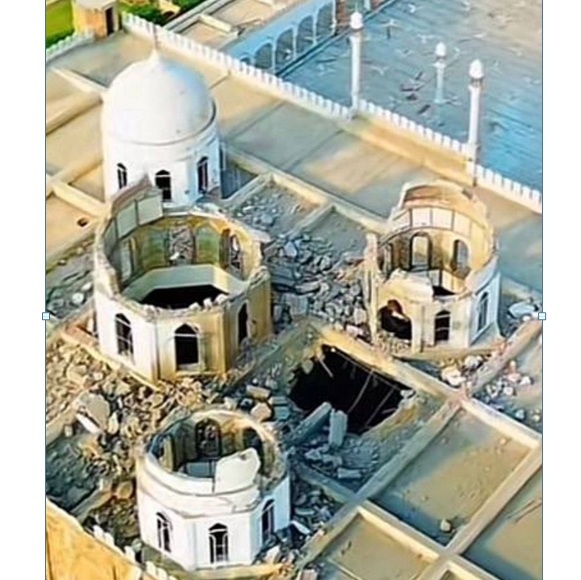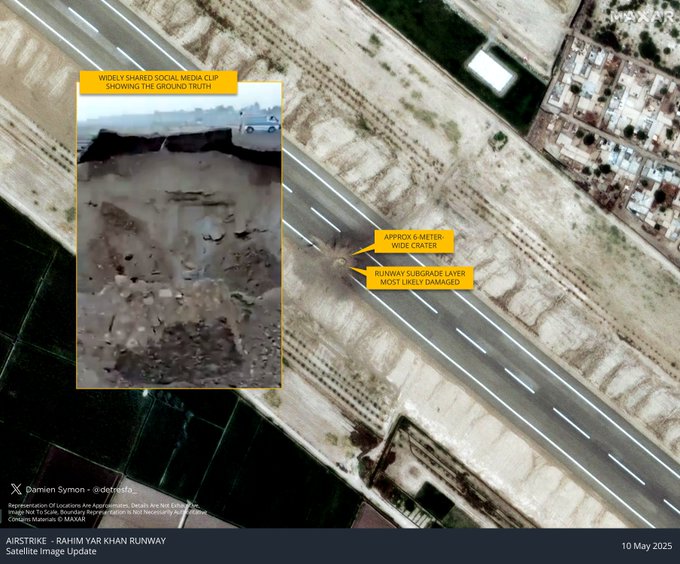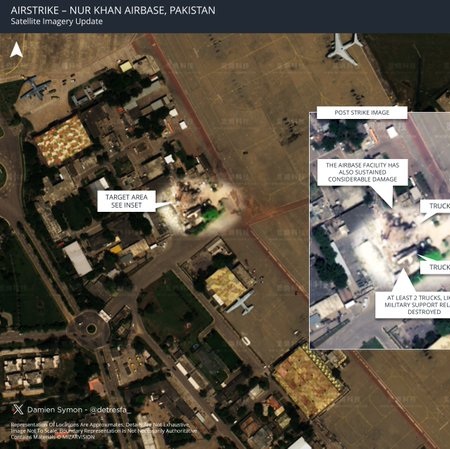Operation Sindoor - India-Pakistan War - May 2025
|
This article documents a recent event. Information may change as initial
news reports may be unreliable. The latest updates to this article may not reflect
the most current information. Please feel free to improve this article (but note
that updates without valid and reliable references will be removed)
(
May
2025
)
|
| Operation Sindoor - India-Pakistan War - May 2025 | ||
|---|---|---|
| Date | May 7, 2025 [45] | |
| Location |
Pakistan, India, Indo-Pak border and Line of Control
|
|
| Goals | To avenge the Pahalgam terror attack, to destory launchpads and bases of terrorism in Pakistan, to serve a deterrence to backers of terrorist in Pakistan | |
| Status | Event Aftermath Ongoing | |
| Lead figures | ||
|
||
| Casualties | ||
| Death(s) |
Pakistan ≈ 150;
India ≈ 50 [1] [12] [45] [50] |
|
To avenge the
Pahalgam terror attack,
destroy terrorist launch-pads in Pakistan and punish terrorism backers, early morning May 7, 2025, India launched 'Operation Sindoor'. The Indian Army, Navy, and Air Force jointly struck deep into Pakistani and Pakistan-Occupied Kashmir (PoK) territory and destroyed nine terrorist camps which had served as the nerve centers of Jaish-e-Mohammed (JeM), Lashkar-e-Taiba (LeT) and Hizbul Mujahideen (HM).
The depth of the strikes into Pakistan territory was historic. The nine sites stretched over 500 kilometres from Bahwalpur in the south to Muzaffarabad in the north of Pakistan. According to top security sources over 100 terrorists were killed.
[45]
[46]
Summary
Between May 7 and May 10, a four-day conflict unfolded during which India conducted cross-border strikes targeting nine terrorist camps located across various cities in Pakistan using precision-guided munitions, loitering drones and missiles. The depth of Indian strikes into Pakistan territory was historic with Bahawalpur being almost a hundred kilometres deep into Pakistan territory. The sites stretched over 500 kilometers from Bahwalpur in the south to Muzaffarabad in the north of Pakistan. An estimated 100 terrorists were killed. Intelligence sources indicated that Pakistan’s Chinese-supplied radar systems had failed to detect the Indian strikes.
The Pakistan military-terror nexus was exposed as Generals attended terrorist funerals. At the funerals uniformed Pakistan Army officers, senior ISI handlers and even the Inspector General of Punjab Police were spotted standing in reverence. Terrorist coffins were draped in Pakistan’s national flag resembling state funerals.
In response, Pakistan launched a series of drone and missile attacks on more than 36 Indian cities using Chinese and Turkish equipment. India successfully intercepted almost all of these strikes using its multi-layered and integrated Akashteer Air Defence System (ADS) along with the S-400 Sudarshan Chakra ADS.
Subsequently, India carried out a second wave of precision attacks, targeting and significantly damaging fifteen Pakistani airbases, cantonment air defence radars and other strategic equipment. India became the first country to strike airbases and cantonment ADS' of a nuclear-armed nation.
Following the exchange of hostilities, Pakistan was unable to provide any credible evidence of damage inflicted on Indian military installations or assets. In contrast, the impact of Indian strikes was substantiated through satellite imagery and videos shared by local sources, clearly indicating substantial and targeted damage to Pakistan’s military infrastructure and capabilities.
On May 10, 2025, at 3:35 pm, Pakistan formally requested a cessation of hostilities. Both sides agreed to a pause in engagement effective from 5:00 pm the same day. This understanding has largely held since.
India made it clear that decisions taken following the Apr 22-Pahalgam terror attack, including holding the Indus Water Treaty in abeyance, would remain in effect. It also declared that any future terrorist attack would be considered an act of war met with a formidable response.
On May 12, addressing the nation for the first time after Operation Sindoor started, PM Modi declared that India had set a new normal for anti-terrorism operations. First, the country will respond decisively to any provocation on terrorism, even beyond its borders. Second it will make no distinction between terrorists and those who support or enable them. And finally, the nation will never submit to nuclear blackmail. He also ruled out any third party mediation on Kashmir.
Context
The Pahalgam terror attack had occurred two weeks earlier on Apr 22. 26 unarmed tourists, predominantly Hindus, were gunned down and more than 18 others were injured in a carnage carried out by Islamic militants. Men were separated, asked to recite an Islamic kalma, stripped to check them for circumcision, before being executed for being of a faith other than Muslim, even as women and children watched in horror.
Preliminary reports suggested that the attack was carried out by a group of seven terrorists, including Pakistani nationals.
The Resistance Front (TRF), a spin-off of Lashkar-e-Taiba (LeT), the Pakistan based terrorist group, claimed responsibility for the attack.
Less than a week earlier, on Apr 16, the Pakistan Army Chief Asim Munir had made a frenzied speech from Islamabad stoking hate for Hindus, suggesting that Pakistan's stability hinged on perpetuating a narrative of hostility towards the followers of the Vedic religion and India.
As a consequence, India suspended the Indus Waters Treaty of 1960 with Pakistan, which had governed India’s allocation of river water from Indus, Chenab and Jhelum to a downstream Pakistan signalling a major shift in relationship between the two countries.
Prime Minister Narendra Modi issued a stern warning to the perpetrators of the Pahalgam terror attack, "India will identify, trace, and punish every terrorist and their backers. We will pursue them to the ends of the Earth.”
Separately Pakistan's Defence Minister Khawaja Asif admitted to training, supporting, and funding terrorist groups for over three decades on a public TV interview. "We have been doing this dirty work for the United States for about three decades, and (for the) West, including Britain." he said.
Prime Minister Narendra Modi gave the Indian armed forces complete freedom on the mode, target and timing of the response to the Pahalgam terror attack.
[1]
Timeline of the Operations
May 7, 2025
Between 1.05 and 1:30 am, India launched 'Operation Sindoor'. The Indian Army, Navy, and Air Force jointly struck deep into Pakistani and Pakistan-Occupied Kashmir (PoK) territory and destroyed nine terrorist camps which had served as the nerve centers of Jaish-e-Mohammed (JeM), Lashkar-e-Taiba (LeT) and Hizbul Mujahideen (HM).
The strikes used precision strike weaponry. A total of 24 missiles and kamizake drones were launched from within Indian territory hit the targets.
The depth of the strikes into Pakistan territory was historic. Among the nine terrorist camps annihilated was Markaz Subhan Allah, in Bahawalpur, 100 km from international border, that had served as the headquarters of JeM. Also destroyed was Markaz Taiba, Muridke, 30 km from the Indo-Pak border, that had served as the LeT Headquarters.
The nine sites stretched over 500 kilometers from Bahwalpur in the south to Muzaffarabad in the north.
According to top security sources over 100 terrorists were killed.
The name ‘Operation Sindoor’ is a tribute to the widows of the 26 men killed in Pahalgam. According to sources, PM Modi stayed up overnight monitoring the deadliest air strikes in real-time.
10 family members and four aides of Terror group Jaish-e-Mohammad chief Masood Azhar were eliminated.
[45]
[46]
A map of the sites attacked is as follows:
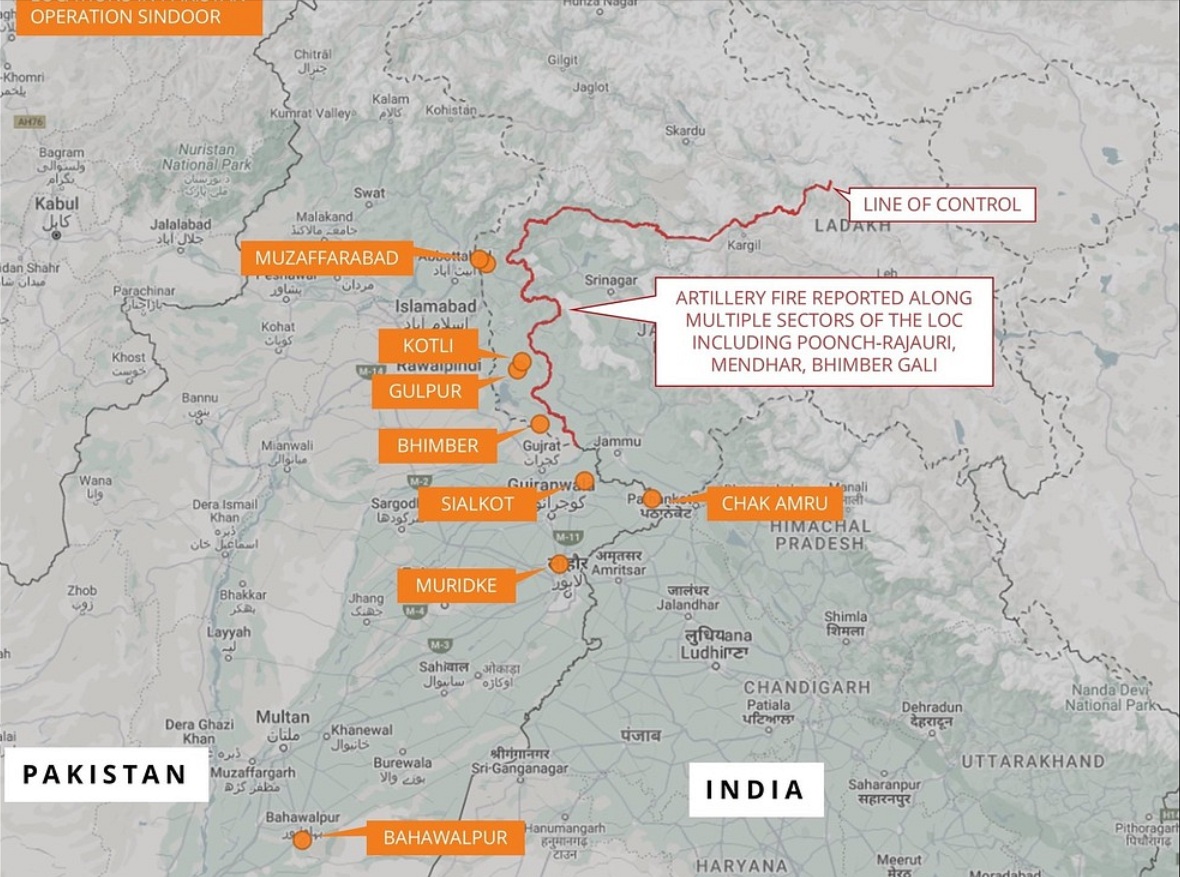
A full list of the sites hit is:
[45]
[53]
1. Markaz Subhan Allah, Bahawalpur - 100 km from international border - Headquarters of JeM struck
2. Markaz Taiba, Muridke - 30 km from the border, LeT Headquarters hit - 26/11 terrorists came from here
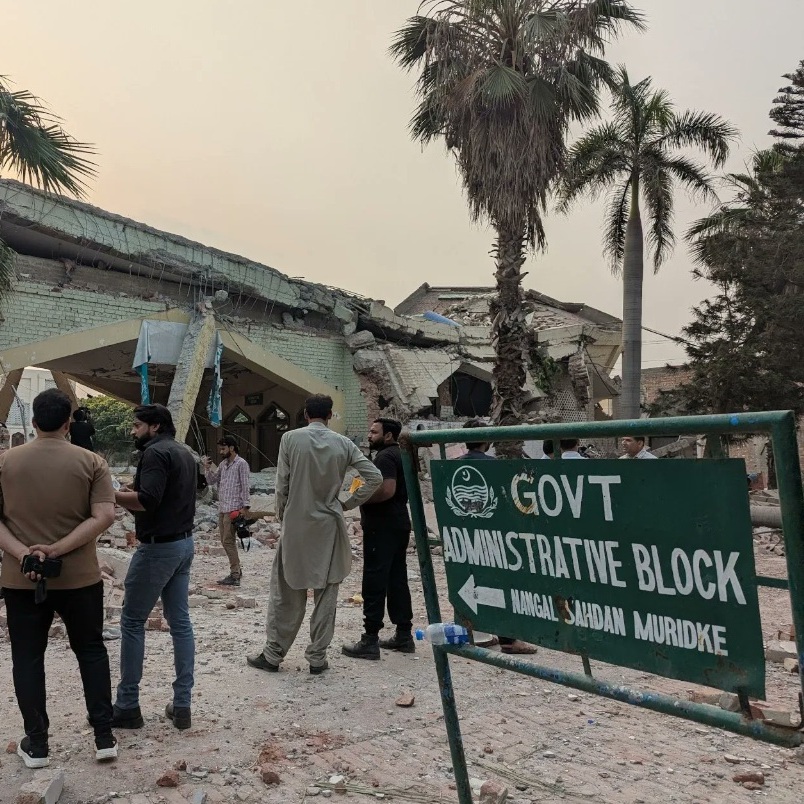 [4]
[4]
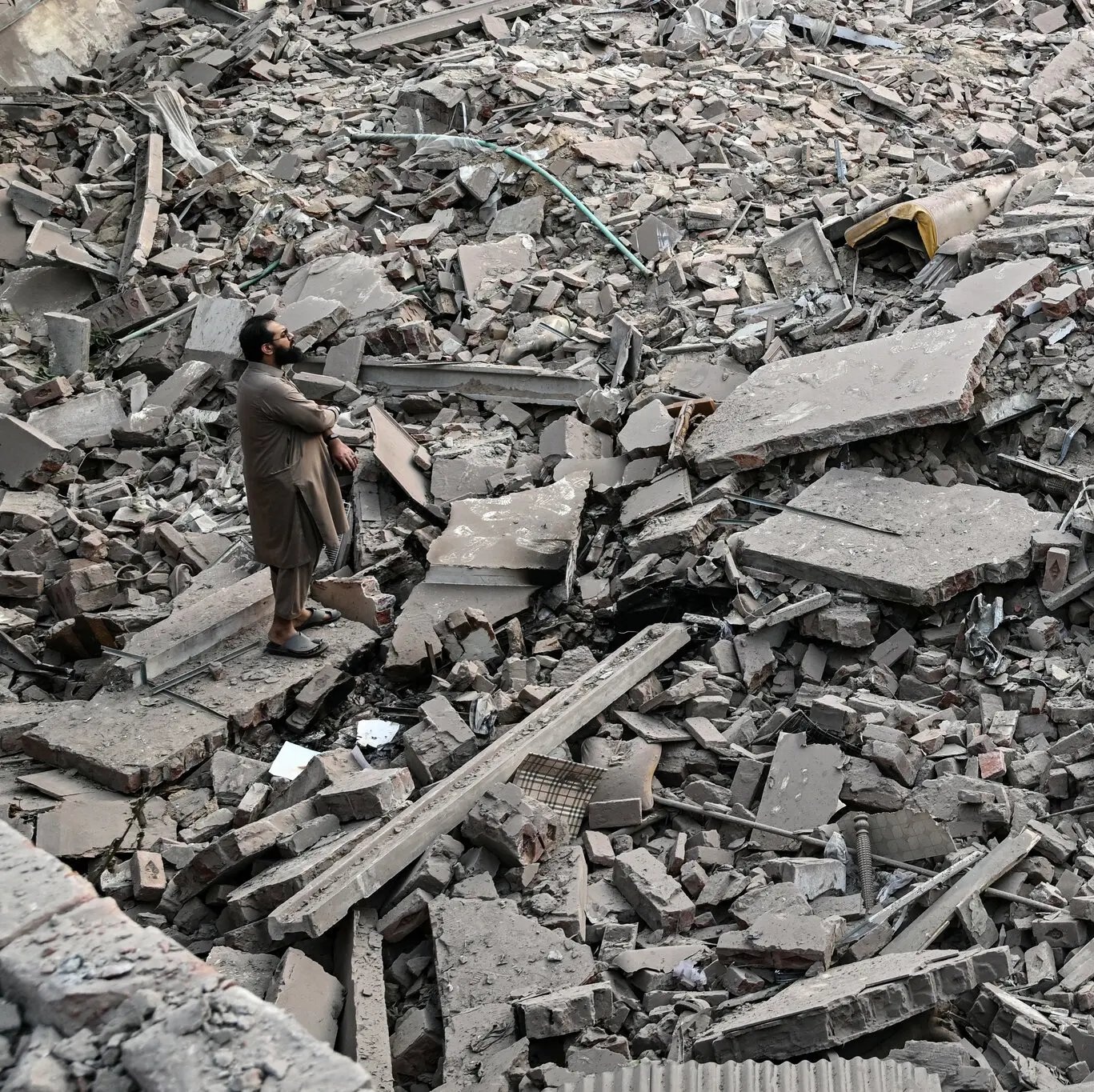 [36]
[36]
3. Sarjal, Tehra Kalan, Sialkot, Pakistan – JeM camp about 8 km from International border opposite Samba-Kathua - JeM training camp for attacks on J&K Police
4. Mehmoona Joya, Sialkot – 15 km from international border - Hizbul Mujahideen camp; control centre for Kathua-Jammu region
5. Markaz Ahle Hadith, Barnala, Bhimber, PoJK - 10 km from LoC opposite Rajouri - LeT; Weapons handling, IED, jungle survival training centre
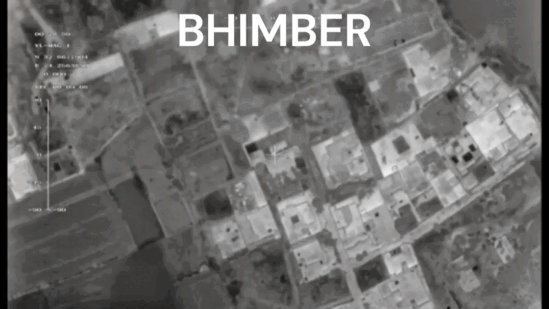 [54]
[54]
6. Markaz Abbas, Kotli, PoJK – 15 km from LoC opposite Rajouri. Lashkar's bomber base with 50 terrorists
7. Maskar Raheel Shahid, Gulpur, Kotli – LeT base active in Rajouri-Poonch
8. Shawai Nalla Camp, Muzaffarabad – 30 kms inside PoK, across Tangdhar sector. It was an LeT training camp for Pahalgam attackers
9. Syedna Bilal Camp, Muzaffarabad – Jaish-e-Mohammad launchpad
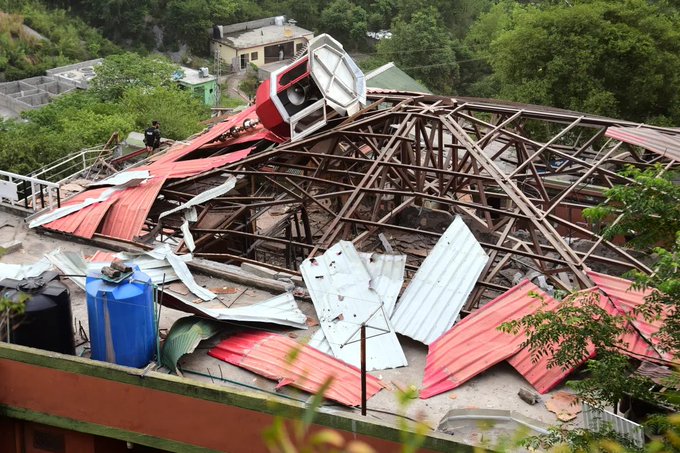 [38]
[39]
[38]
[39]
The Foreign Secretary called the air strikes within Pakistan and PoK territory 'measured, non-escalatory, proportionate, and responsible' which focused on dismantling the terrorist infrastructure and disabling terrorists likely to be sent across to India. [45]
Intelligence sources indicated that Pakistan’s Chinese-supplied radar systems had failed to detect the latest Indian strikes, repeating a pattern of critical failures seen during past high-profile military actions by India, including the Balakot air strike. [47]
Pakistan military-terror nexus was exposed as Generals attended terrorist funerals. At the funerals uniformed Pakistan Army officers, senior ISI handlers, and even the Inspector General of Punjab Police were spotted standing in reverence. Terrorist coffins were draped in Pakistan’s national flag as if it was a state funeral. [48] [49]
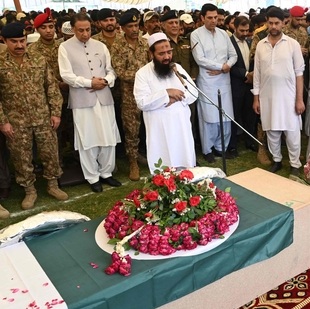 [40]
[40]
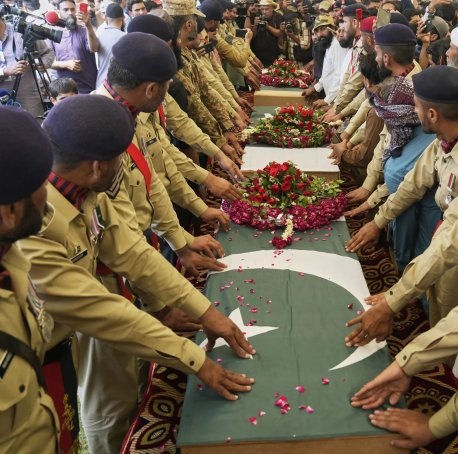 [37]
[37]
Pakistan forces sharply escalated cross-border shelling in Jammu and Kashmir targeting civilians in India that left at least nine dead and 38 injured. [50]
Sections of the international media made claims that India had lost fighter jets in the strikes. No evidence was offered. In a subsequent statement during a Director General of Military Operations briefing, Air Marshal Air Marshal A.K. Bharti confirmed ‘India had achieved all its objectives and all our pilots are back home’. He also indicated stated there was a loss of Pakistani jets without offering a specific number. [5] Independent defence analyst, Tom Cooper, called the downing of Indian jets a fake narrative spread by international media. [6]
About two weeks earlier, India had deployed its INS Vikrant aircraft carrier strike group to the Arabian Sea, closer to Pakistan's maritime frontier. [1]
May 8 and 9, 2025
Pakistan Armed Forces launched multiple attacks using drones and missiles along the entire Western border. On May 8, these attacks involved 300-400 Turkish-Asisguard Songar drones targeting 36 sites, including civilian and military infrastructure. India also reported cross border firing by heavy calibre artillery guns along the Line of Control (LoC). Om May 9 another 26 Indian sites were targeted.
[7]
[8]
Pakistan attempted to strike Amritsar's Golden Temple however India foiled all attempts. Reports also suggested that Pakistan had laid a plan to blame India for the attack on the Gurdwara to wedge a Hindu-Sikh divide. A social media campaign was ready to spread the fake narrative. Pakistan had struck a Gurdwara on May 7 in Poonch killing three members of the Sikh community.
[9]
The Indian Armed Forces foiled nearly all of the incoming attacks unleashing India own “Iron Dome”, the Akashteer Air Defence System (ADS) along with S-400 Sudarshan Chakra ADS. All eight Pakistani missiles were intercepted by India.
The layered and integrated Akashteer ADS interfaces air defence and land-based sensors from both the Army Air Defence (AAD) and the Indian Air Force (IAF) providing a seamless and unified air threat picture that is accessible to the all operational units.
On May 8, Indian Armed Forces carried out SEAD/DEAD operations, neutralizing Pakistani air defence systems in Lahore. Drones attacked several other Pakistani cities including Karachi and Rawalpindi. A drone also landed inside the Rawalpindi Cricket Stadium complex before the start of a Pakistan Super League match, prompting the Pakistan Cricket Board to cancel the matches.
[7]
[8]
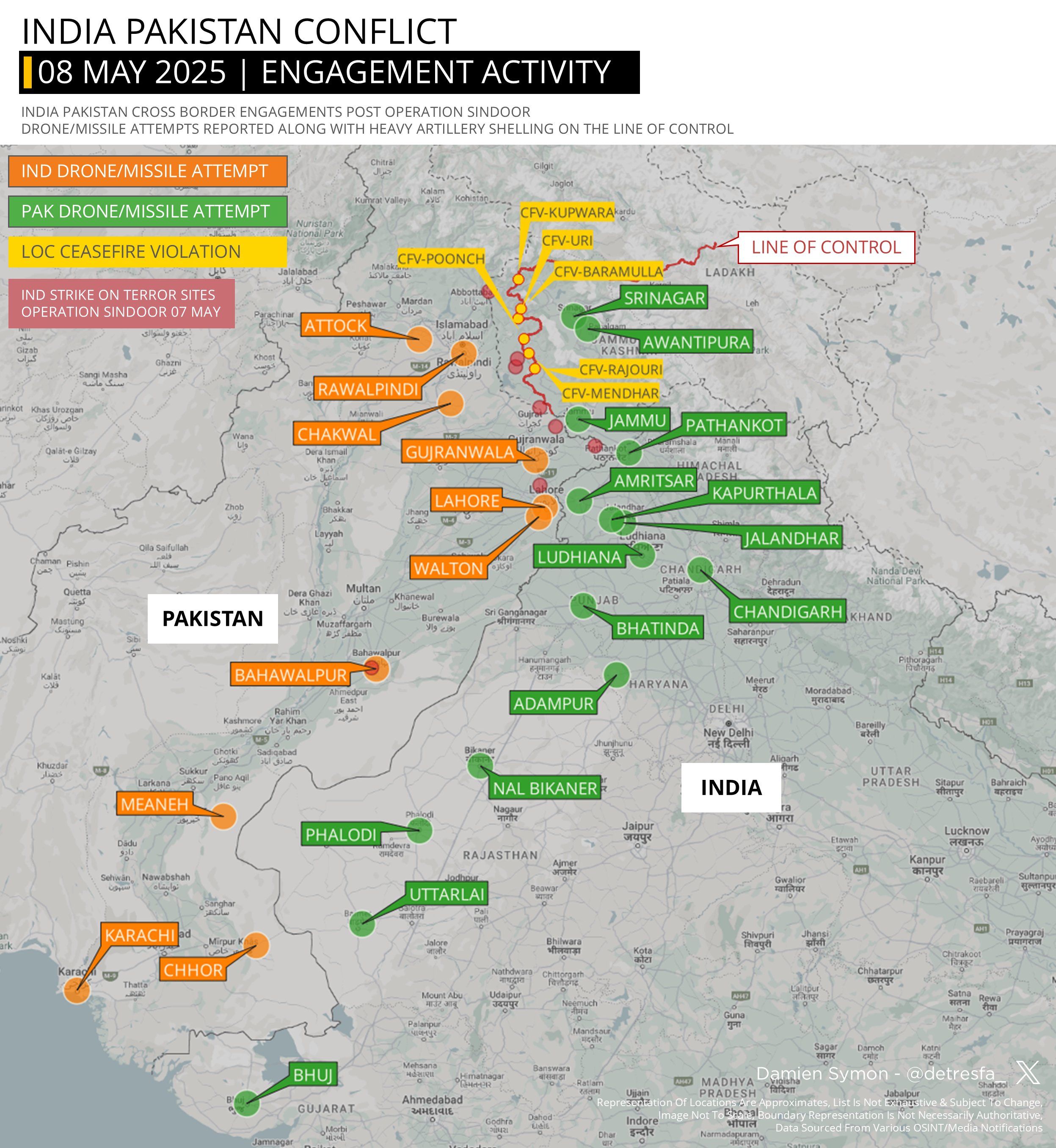 [10]
[10]
May 10, 2025
The conflict escalated on 10 May. India accused Pakistan of launching missile attacks on air bases in Punjab at around 2:00 am, and said that it launched its own retaliatory attacks on Pakistan's air bases. These were said to have been precision attacks on identified military targets
[8]
India became the first country to strike airbases and cantonment ADs of a nuclear-armed nation in a single operation, targeting 15 sites and destroying, by some accounts, 20% of Pakistan’s air force assets.
11 of these airbases and air defence radar installations were damaged on the 10th morning in a span of 25 minutes.
High casualties were inflicted at Bholari airbase, including the death of Squadron Leader Usman Yusuf, nearly 50 other personnel and the destruction of key fighter jets.
[12]
[13]
[28]
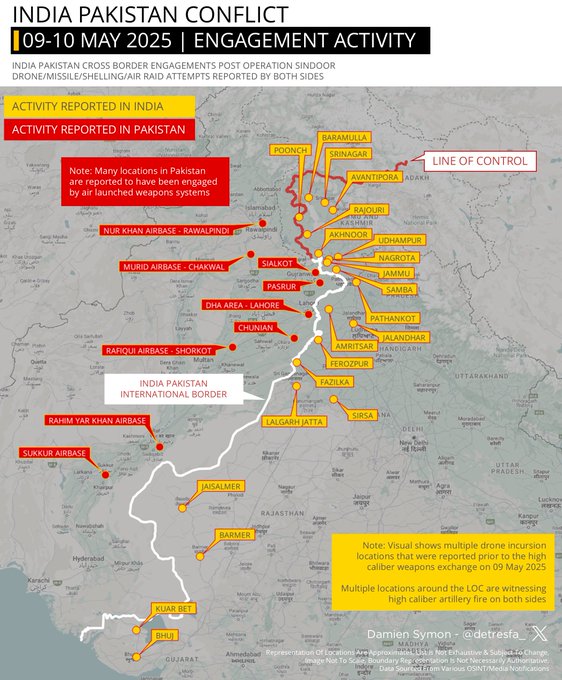 [14]
[14]
The Indian attacks were on Pakistani terrorist camps and its military infrastructure as seen below:
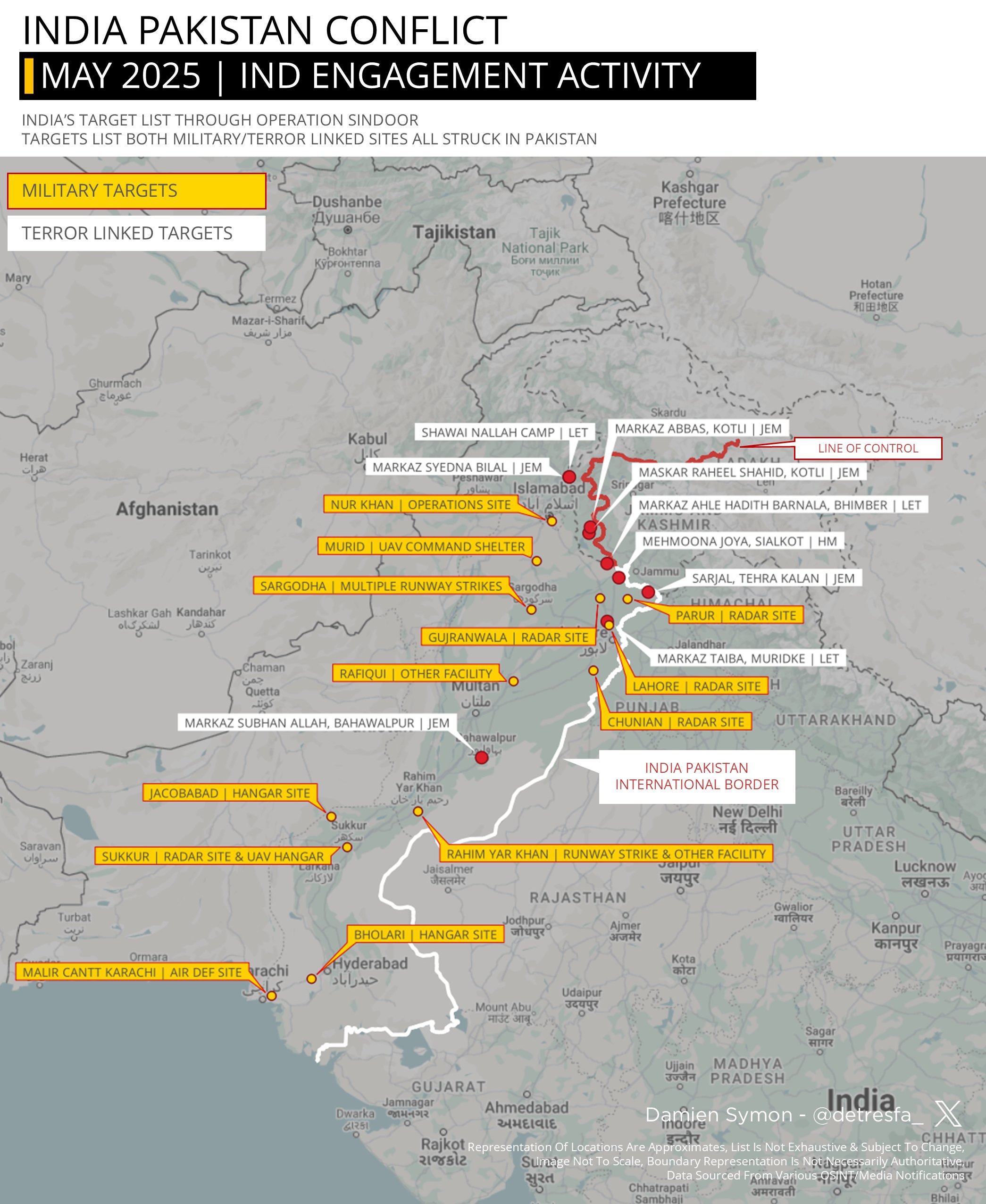 [16]
[16]
The airbases, airstrips, aircraft hangars, air-defence radars, command control centers India target in Pakistan were:
[15]
[41]
1. Sargodha Airbase and Kirana Hills: Located in Sargodha in Punjab province. The airstrip was damaged in twin strikes.
 [23]
[23]
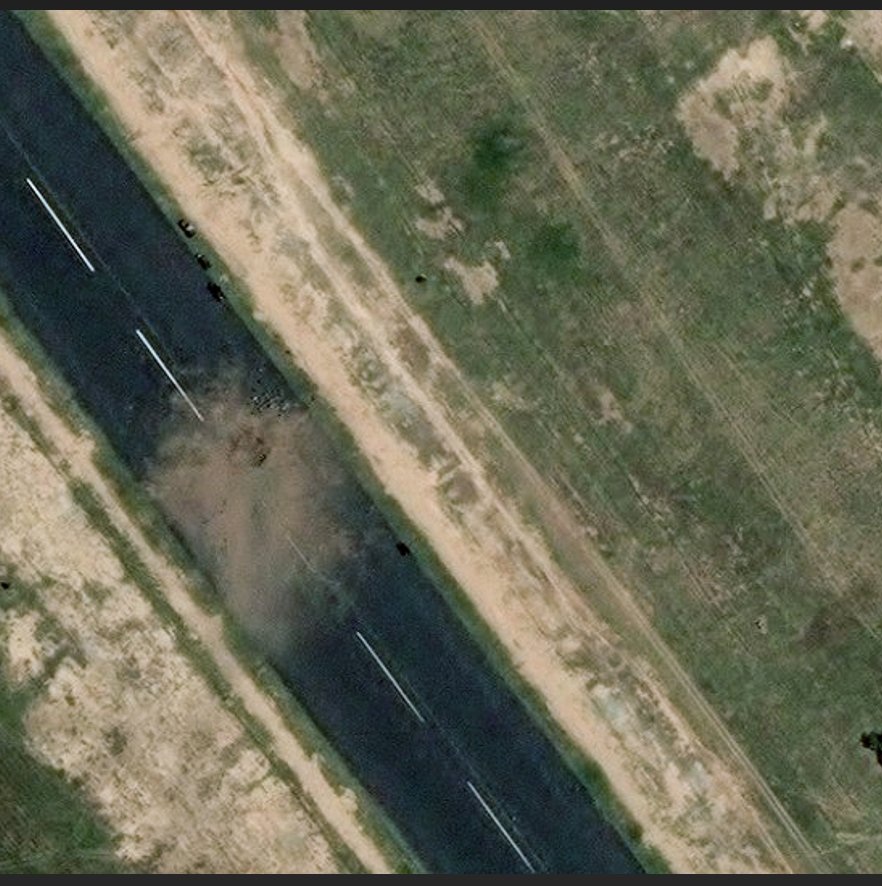 [24]
[24]
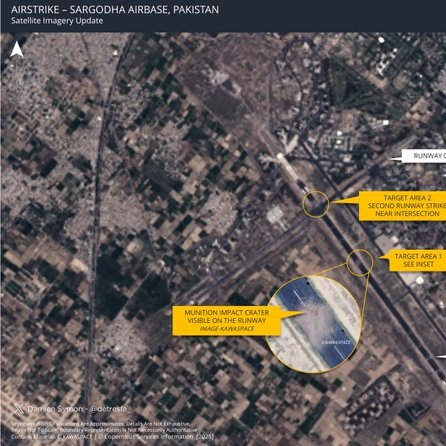 [25]
[25]
 [26]
[26]
2. Rahimyar Khan Airbase: Located near Rahimyar Khan in southern Punjab, Pakistan. A huge crater was formed on the airstrips
3. Sukkur Airbase: A Pakistan Air Force base that also functions as Sindh's second largest civilian airport after Karachi. An aircraft hangar and air defence radar were neutralized.
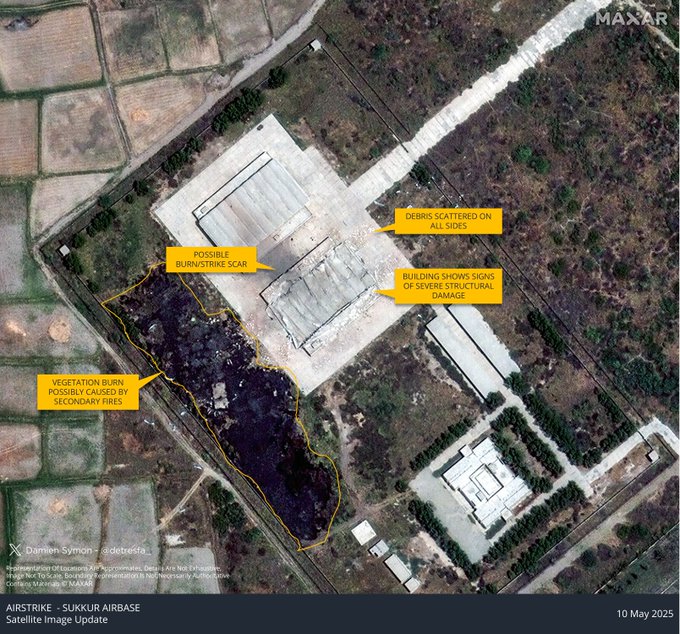 [19]
[22]
[19]
[22]
4. Jacobabad Airbase: Located in the town of Jacobabad at the northern part of Sindh province. Aircraft hangar destroyed along with other damage to ancillary structures.
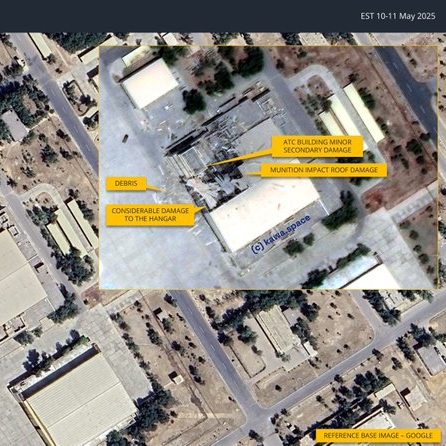 [20]
[20]
5. Bholari Airbase: Located near Jamshoro in Sindh. Aircraft hangar anihilated amid reports of multiple aircrafts and air force personnel loss.
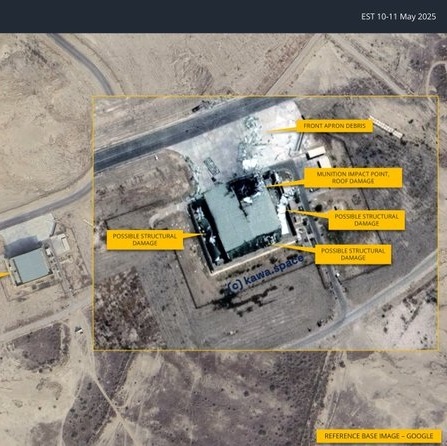 [17]
[17]
6. Nur Khan Airbase: Located in Chaklala, Rawalpindi, Punjab. Mobile Command and Control Centres destroyed
7. Lahore Walton Defence Complex - Command and Control Units struck, Air Defence Systems damaged (struck on May 7)
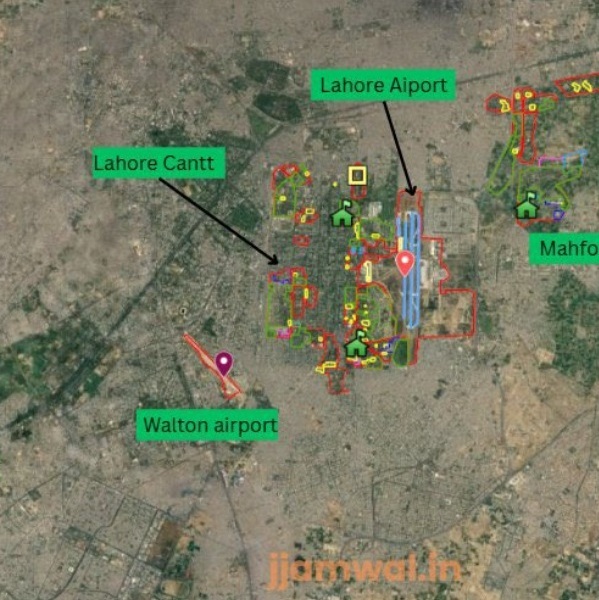 [28]
[28]
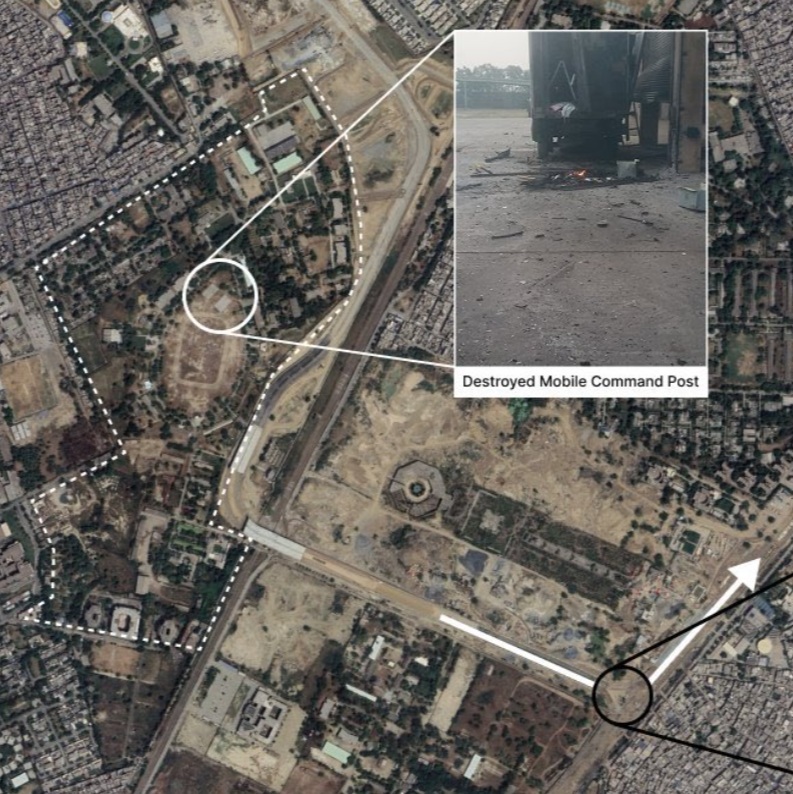 [28]
[28]
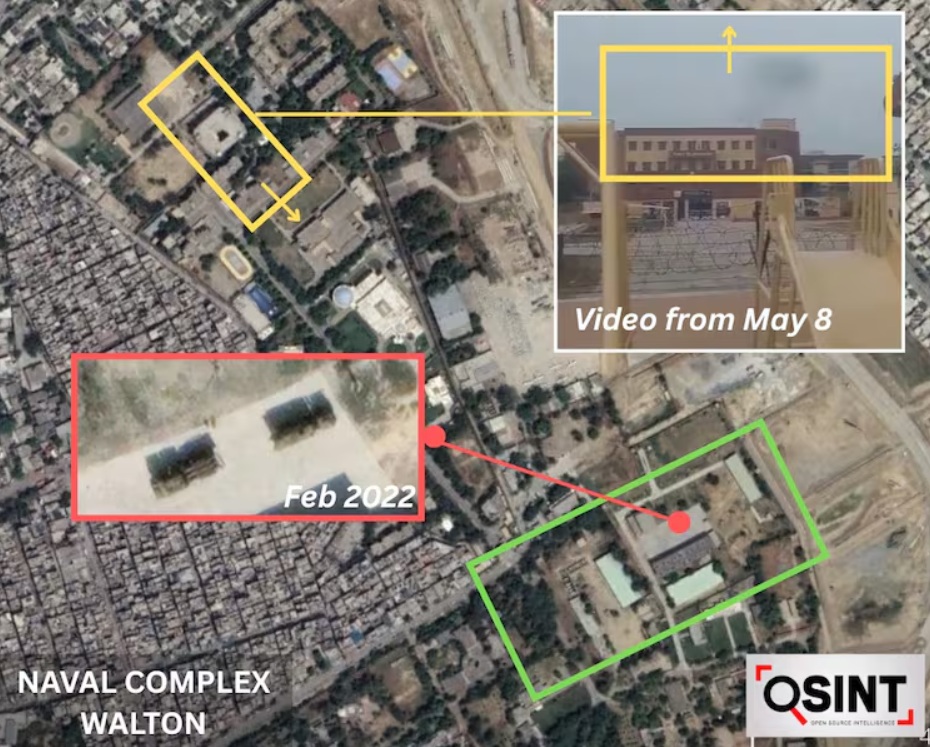
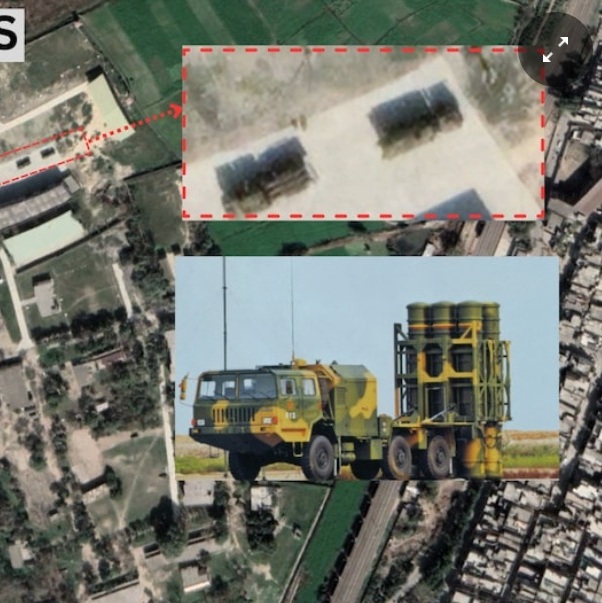 [41]
[41]
8. Chunian Airbase: Located near the town of Chunian in Punjab, about 70 km south of Lahore. (struck on 7th-8th May). Air defence radar destroyed.
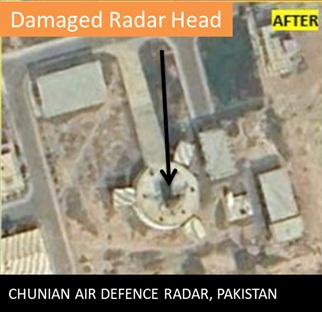 [29]
[29]
8. Pasrur Air Defence Radar: Located near the Sialkot district in Punjab. (struck on 7th-8th May)
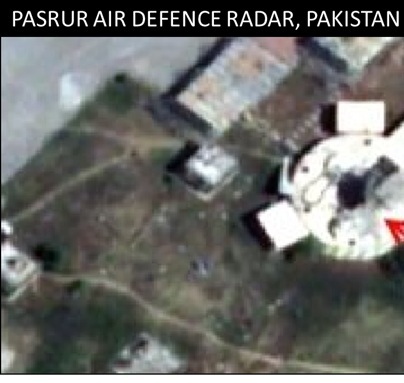 [27]
[27]
10. Arifwala Air Defence Radar
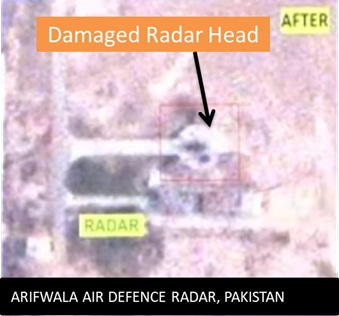 [29]
[29]
11. Murid Airbase: Located in Murid, Chakwal district of Punjab. Indian missile strike creates a 3 meter wide crater on potential underground munitions storage facility. [52]
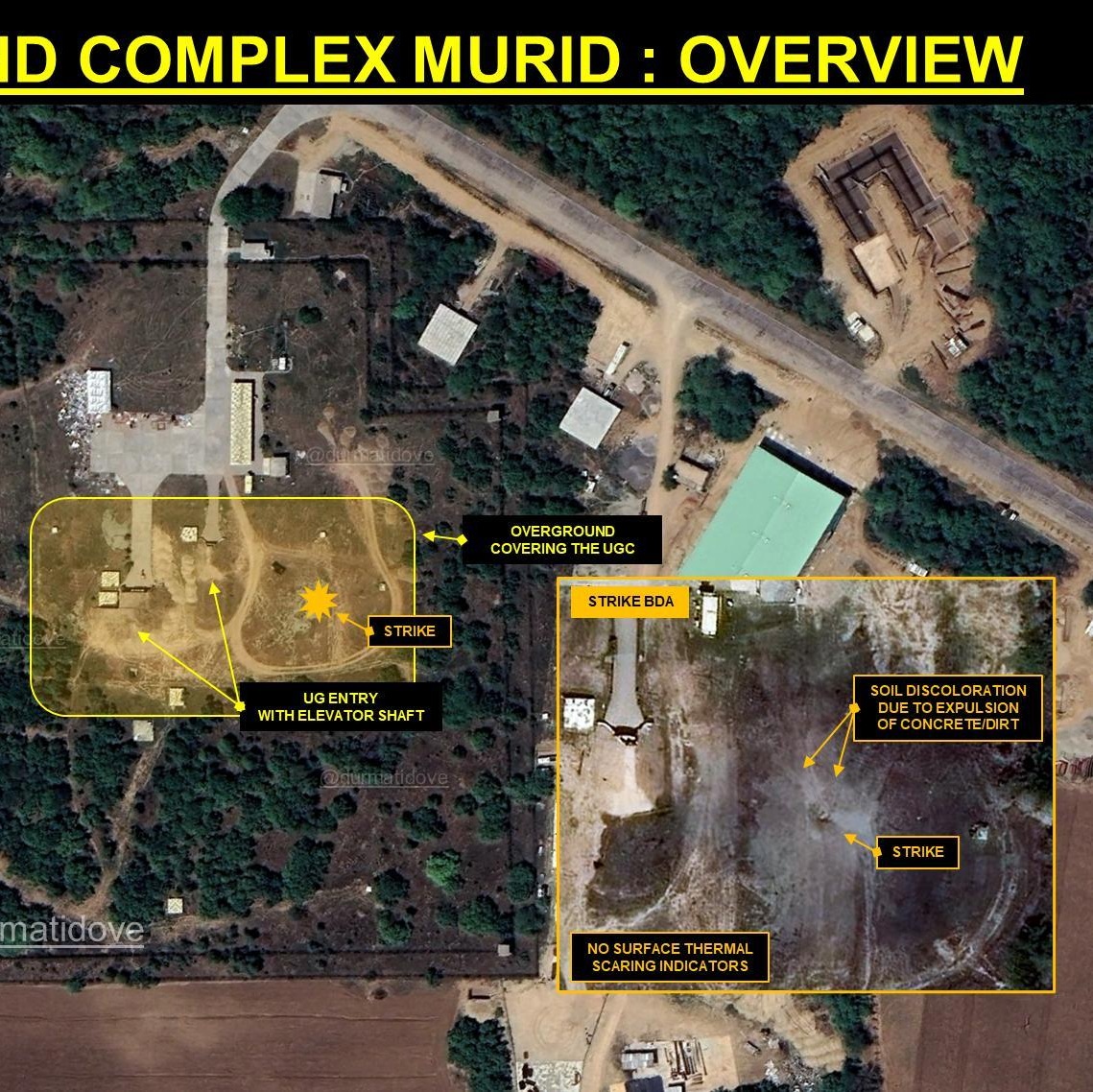 [51]
[51]
12. Rafiqui Airbase: Located near Shorkot in the Jhang district of Punjab, approximately 337 km south of Islamabad.
13. Sialkot Air Defence Radar: Located near Sialkot city in the Punjab province of Pakistan.
14 Gurjanwala Air Defence Radar (struck on 7th-8th May)
15. Malir Cantonment Karachi
Indian intelligence agencies soon intercepted ‘high alert messages’ flashing across Pakistan’s defence networks after the Nur Khan air base attack near Rawalpindi. The airbase is within 20 km of Pakistan’s capital, Islamabad. It is strategically important for its air refuelling capabilities, which would keep the Pakistani fighter jets afloat. More importantly, the Nur Khan air base is close to the Strategic Plans Division that maintains Pakistan’s nuclear arsenal.
Pakistan’s air defence systems had failed to intercept/ neutralise the strikes, resulting in large-scale damage and destruction. Fearing damage to its nuclear arsenal, Pakistan then called the United States for urgent intervention. The US, directed Pakistan to hot-line the Indian Army Director General of Military Operations.
At 3:35 pm, IST, Pakistani Major General Kashif Abdullah spoke to his Indian counterpart, Lieutenant General Rajiv Ghai and requested a cessation of attacks. India later agreed to the pause making it clear that decisions taken following the Apr 22-Pahalgam terror attack, including holding the Indus Water Treaty in abeyance, would remain in effect. It also declared that any future terrorist attack would be considered an act of war met with a formidable response. [32]
The agreement to cease attacks commenced at 5 pm IST. Pakistan violated it within hours after the start by resuming cross border fire. However, over the next two days these violations, adequately thwarted by the Indian armed forces, also quietened down. [34]
In the midst of the conflict, despite its history of sponsoring terror, the International Monetary Fund approved a loan of $1 billion to Pakistan. India had opposed the grant of the loan pointing out that the funds would be used for terrorism and war, but its warning was ignored. As IMF rules allow either a yes-vote or an abstention, India abstained from voting to express its dissent. [31]
A confidential Pakistani military dossier related released susbsequently revealed that at least seven more strategic locations were hit by Indian strikes on the intervening night of May 9 and 10. Indian forces struck infrastructure in Peshawar, Jhang, Hyderabad (Sindh), Gujrat, Bahawalnagar, Attock, and Chhor inflicting damage on both military and terror-related assets. [55]
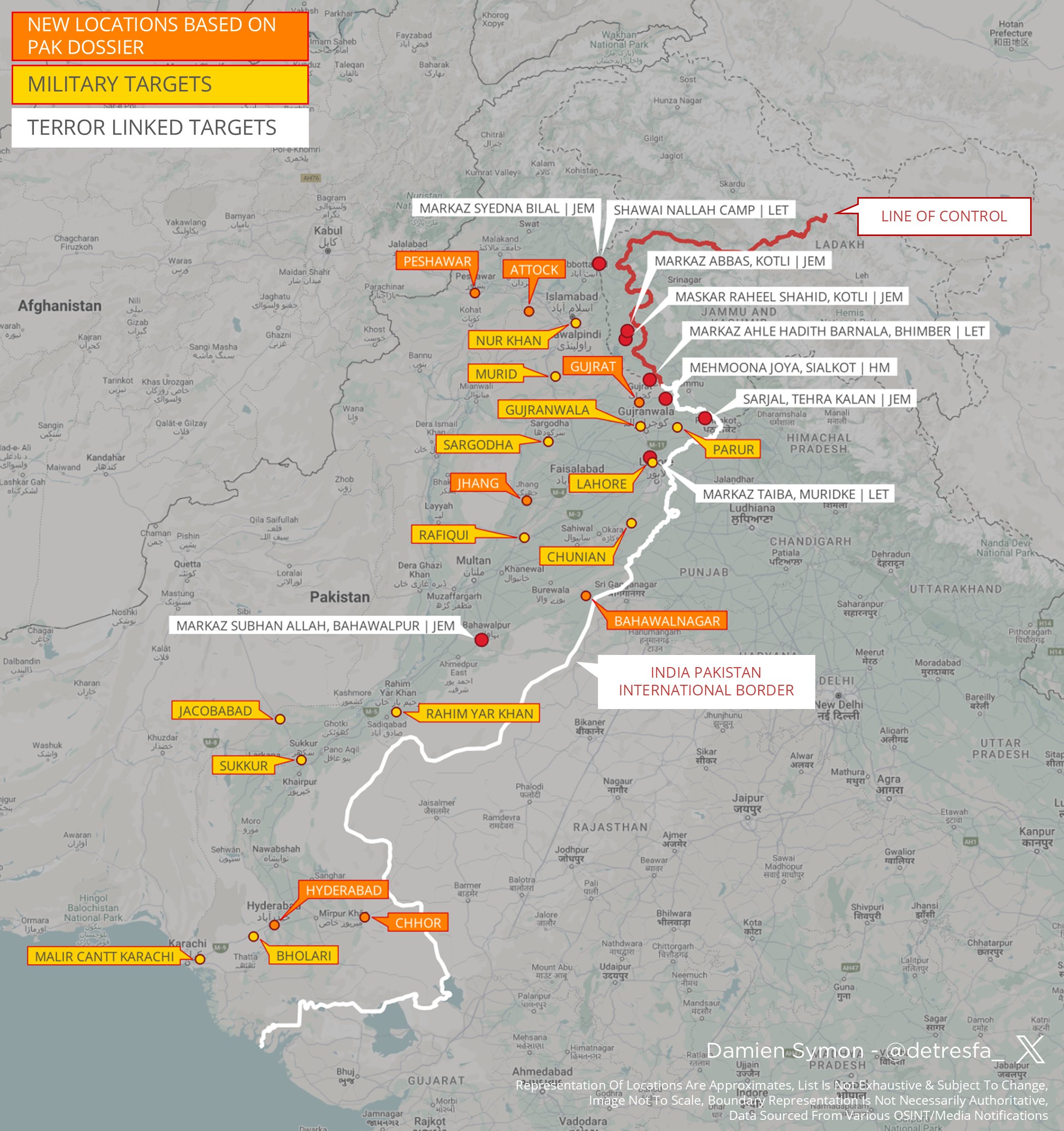 [56]
[56]
May 11, 2025 and After
A reconstruction of INS Vikrant’s first combat mission illustrating its kinetic capability, tempo and operational footprint in the Arabian Sea during the Operation Sindoor was as follows:
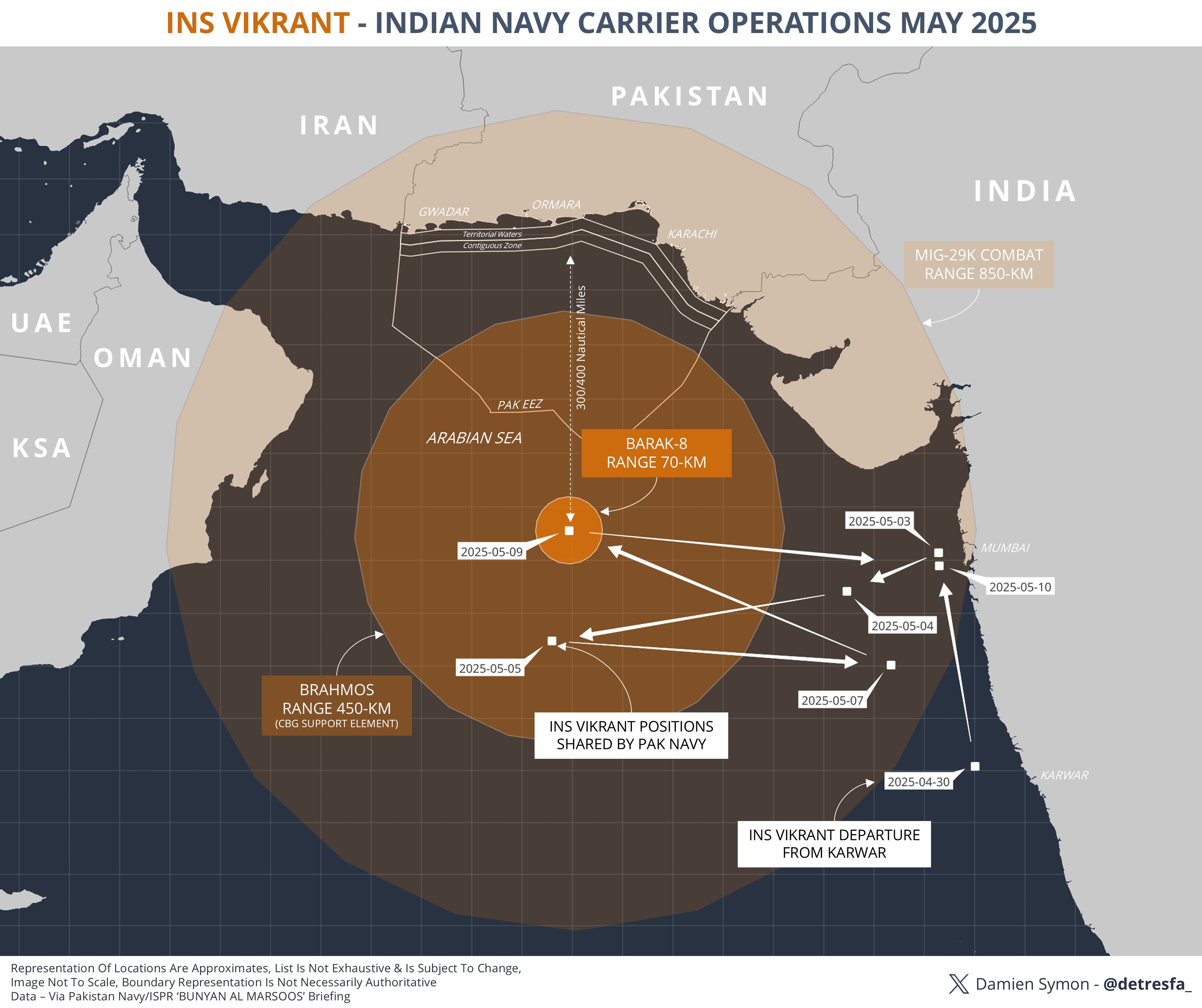 [36]
[36]
On May 12, addressing the nation for the first time after Operation Sindoor started, PM Modi declared that India had set a new normal for anti-terrorism operations. First, the country will respond decisively to any provocation on terrorism, even beyond its borders. Second it will make no distinction between terrorists and those who support or enable them. And finally, the nation will never submit to nuclear blackmail.
Rejecting the need for any third party mediation, he said, 'If there are talks between India and Pakistan, they will only be on terrorism and Pakistan Occupied Kashmir (PoK)' marking a bold and assertive shift in India’s new national security posture.
India declared that it had only halted Operation Sindoor at that moment, and India's next move would depend on how Pakistan conducted its business in future.
[35]
The Chakra Dialogues Foundation, a think tank established by former Indian Air Force pilot Wing Commander Satyam Kushwaha, released a comprehensive report detailing the strategic and operational losses PAF incurred. It estimated PAF losses to include 8 F-16 jets, a SAAB 2000 Erieye AEW&C, an IL-78 Air-to-Air Refueller and a C-130 Hercules.
[43]
[44]
Pakistani Nuclear Facility Potentially Hit
On Jun 3, Lt-General Vinod Khandare, former Principal Advisor to the Ministry of Defence, in an interview to Republic TV Editor-in-Chief, Arnab Goswami, seemed to suggest that though India had not deliberately targeted Pakistan's nuclear stockpile or command structures, it is possible that a collateral impact may have occurred at Nur Khan Airbase, Kirana Hills, or Chagai Hills. The Kirana Hills, located about 8 km southeast of Sargodha Air Base, and are widely believed to house some of Pakistan’s most sensitive nuclear assets. The Nur Khan Airbase in Rawalpindi is critical to Pakistan’s nuclear command structure. The Indian strikes exposed the vulnerability of Pakistan’s nuclear infrastructure. [57] [58]
Several indicators suggest that a possible breach had culminated in Pakistan's hurried request to India for a ceasefire on May 10th.
Pakistan Prime Minister Shehbaz Sharif had called a meeting of the National Command Authority, the highest decision-making body on national security matters which oversees its nuclear arsenal on the same day. [59] A US Department of Energy’s nuclear emergency support aircraft (B350 AMS) had also visited Pakistan sparking speculation that it had been flown in to detect radiation leaks. [33]
On May 11, an Egyptian aircraft EGY1916 departed from China to land in Pakistan leading to speculation on social media that boron from Egypt's North Nile Delta region, may have been imported to offset a nuclear radiation leak. Boron, a metalloid with significant applications in the nuclear energy sector, is known for its ability to absorb radiation, making it essential for controlling nuclear reactors. [58]
Pakistan has been hit by at least nine earthquakes in the month of May 2025 alone with magnitudes ranging from 4.0 to 5.7 on the Richter scale. While the country has a history of frequent earthquakes as it sits atop one of the most seismically active tectonic plate collision zones, questions are being asked if this is the result of inadvertent nuclear warhead chemical cookoffs triggered by the Indian strikes or some new underground nuclear tests. [57] [60]
On 14th May the IAEA declared there was no 'radiation leak' at Pakistan's nuclear sites after the clash with India. However Major General GD Bakshi, a panellist on the same Republic TV broadcast, pointed out that the IAEA can confirm radiation leaks only on civil nuclear sites not military ones like Kirana Hills. [57] [61] [62]
India has maintained strategic ambiguity regarding the matter with Air Marshal AK Bharti, Director General of Air Operations, telling reporters on May 12, "Thank you for telling us that Kirana Hills houses some (Pakistani) nuclear installation, we did not know about it."
References
- Pahalgam Islamic Terrorist Attack on Tourists-Apr 2025 and its Fallout . IndiaWiki.Apr 22, 2025
- India to present evidence of Pakistan’s terror links before UNSC . Mathrubhumi. May 11, 2025
- X post . X. May 15, 2025
- X post . X. May 12, 2025
- NDTV . All Indian Pilots are Back Home. May 12, 2025
- X post . NDTV. May 14, 2025
- Know all about Indian ‘Iron Dome’ Akashteer . OpIndia. May 9, 2025
- 2025 India–Pakistan conflict . Wikipedia. May 7, 2025
- Army foils Pakistan's cowardly bid to strike Amritsar's Goldent Temple . Organiser. May 14, 2025
- X post Damien Symon . X. May 8, 2025
- X post Damien Symon . X. May 10, 2025
- India’s Strike On 11 Airbases Destroyed 20% Of Pakistan Air Force Infra . News 18. May 13, 2025
- Republic . X. May 13, 2025
- X post Damien Symon . X. May 10, 2025
- India used BrahMos to strike 11 airbases in Pakistan . India TV News. May 11, 2025
- X post Damien Symon . X. May 12, 2025
- X post Damien Symon . X. May 11, 2025
- X post Damien Symon . X. May 13, 2025
- X post Damien Symon . X. May 13, 2025
- X post Damien Symon . X. May 11, 2025
- X post Damien Symon . X. May 11, 2025
- Clear satellite pics show extensive damage to Pak bases after Indian strikes . India Today. May 13, 2025
- X post VishnuNDTV . NDTV. May 13, 2025
- X post VishnuNDTV . NDTV. May 13, 2025
- X post Damien Symon . X. May 11, 2025
- X post Jaidev Jamwal . X. May 10, 2025
- X post Sidhant Sibal . X. May 14, 2025
- X post Spadex . X. May 15, 2025
- How India destroyed Pakistani military bases . OpIndia. May 12, 2025
- X post Aditya Kaul . X. May 7, 2025
- IMF Approves $1 Billion Loan To Terror Sponsor Pakistan . Republic. May 10, 2025
- How India’s targeting of Pakistani military bases close to its nuclear arsenal forced it to beg US for help, make desperate call for ‘ceasefire’ . OpIndia. May 11, 2025
- Inflicting potential nuclear damage, neutralising terror bases and violating Pakistan: How India does not need a ‘mediator’ and the ceasefire is a win-win situation for us . OpIndia. May 11, 2025
- Pakistan called up India requesting ceasefire hours after India’s strikes against 8 PAF airbases: Read what forced Pakistan to end hostilities . OpIndia. May 10, 2025
- Analysing PM Modi’s Speech: India Sets Out New Doctrine, Operation Sindoor Is Just The Beginning . TimesNow. May 12, 2025
- X Post Sensei Kraken Zero . X. May 19, 2025
- X Post Sensei Kraken Zero . X. May 19, 2025
- X Post Sensei Kraken Zero . X. May 19, 2025
- India cautions Chinese media over 'Operation Sindoor' posts . Rediff. May 7, 2025
- Who is Hafiz Abdul Rauf, man leading funeral of terrorists killed in Operation Sindoor? . Hindustan Times. May 13, 2025
- Press Briefing by DGMO of All Three Services on #OperationSindoor | 11 May 2025 . Sansad TV. May 11, 2025
- All about Pak air defence system destroyed by India . India Today. May 8, 2025
- Pakistani Air Force Suffered Massive Losses In India’s Operation Sindoor: 8 F-16s, 4 JF-17s Among Destroyed Assets . The Communemag. May 22, 2025
- X Post Rahul Shivshankar . X. May 23, 2025
- "Indian Forces Unleash Firepower: Know How PM Modi, His Team Planned & Executed Operation Sindoor" . Republic TV.May 7, 2025
- Inside 'Operation Sindoor': A Closer Look At The Nine Terror Sites Targeted By India’s Precision Strikes . Swarajyamag.May 7, 2025
- Balakot, BrahMos And Now Operation Sindoor: Chinese Radars Fail Pakistan Again . News 18.May 7, 2025
- Pakistani Army and Officials Attend Funerals of Terrorists Killed in Indian Strikes Under Operation Sindoor . Republic TV.May 7, 2025
- Military-terror nexus exposed as Generals attend terrorist funerals post Operation Sindoor . Organiser.May 7, 2025
- 9 civilians killed, 38 injured as Pakistan resorts to heavy artillery fire after India’s Operation Sindoor . Indian Express.May 7, 2025
- X Post Damien Symon . X. May 29, 2025
- Operation Sindoor: India’s Precision Strikes Leave 3-Metre Deep Crater At Pakistan's Murid Airbase . Times Now. May 28, 2025
- Operation Sindoor: Understanding Context and Consequences . ORF. May 9, 2025
- First visuals of Operation Sindoor: Watch Indian forces destroy terror camps in Pak . ORF. May 7, 2025
- Pakistan Admits Broader Impact of India’s ‘Operation Sindoor’; Dossier Reveals Eight Additional Targets . ORF. Jun 3, 2025
- X Post Damien Symon . X. Jun 3, 2025
- Did India Target Pakistan's Strategic Nuclear Facility During Operation Sindoor? Insider Tell All . Republic. Jun 3, 2025
- Egyptian Plane’s Landing In Pakistan Sparks Fears Over Nuclear Security Amid Tension With India . Daily Guardian. May 13, 2025
- Pak PM calls meet of nuclear command body after India hits airbases: Report . India Today. May 10, 2025
- Nine earthquakes in around 30 days: What's the reason behind frequent tremors in Pakistan? Is it related to nuclear tests or... . MSN. May 31, 2025
- IAEA rejects 'radiation leak' rumours at Pakistan nuclear sites after clash with India . The New Indian Express. May 15, 2025
- X Post Republic . Republic. Jun 3, 2025
Edit Article
To edit this article or add a new page to IndiaWiki.org kindly send an email with
the proposed updates to IndiaWiki
